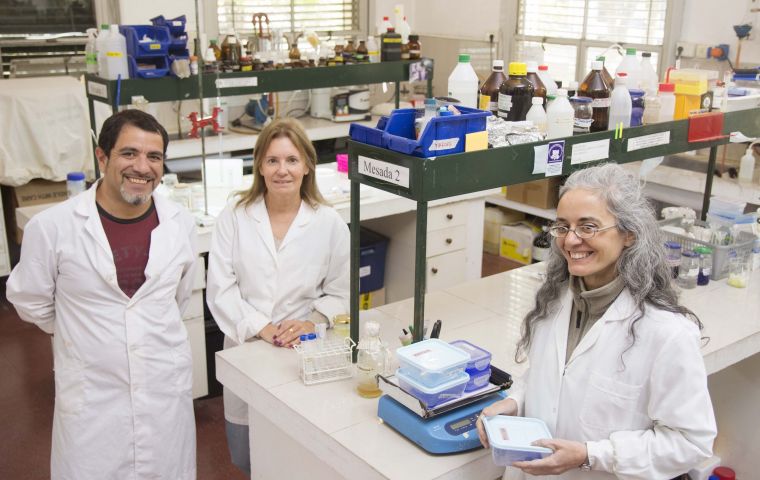MercoPress. South Atlantic News Agency
Argentine researchers announce discovery regarding ibuprofen production
 Thanks to biotechnology these microorganisms are also used in the manufacture of chemical and pharmaceutical products
Thanks to biotechnology these microorganisms are also used in the manufacture of chemical and pharmaceutical products A team of researchers from the Center for Plant Protein Research (CIProVe) and the Center for Research and Development in Applied Sciences Dr. Jorge J. Ronco (Cindeca), both from the School of Exact Sciences of the National University of La Plata (UNLP) announced that the fungus Candida antarctica has a series of properties that make the manufacture of Ibuprofen more efficient, Diario Hoy reported.
As published in the journal Catalyst, the scientists reported the results of a joint work on the use of a protein from the yeast Candida antarctica -a microscopic fungus formed by a single cell- to make the manufacture of ibuprofen more efficient.
In their study, the working group formed by Laura Briand, Carlos Llerena Suster, María Victoria Toledo, Silvana Matkovic, and Susana Morcelle provides key features for the rational design of a biocatalyst. The compound was concocted by fixing the enzyme lipase B, a yeast protein, on a nanostructured silicon dioxide support. The researchers explored the performance of the biocatalyst with the addition of different amounts of chemicals called polyols, to search for a configuration that would prove more efficient than available biocatalysts in the purification of ibuprofen.
“It is a component that, without participating in a chemical reaction, is capable of greatly accelerating the speed of the reaction,” explains chemist Carlos Llerena Suster, CIProVe researcher and UNLP professor. “What is fundamental is the presence of enzymes, which are proteins whose function is to catalyze reactions in or for living beings. These enzymes can be free, in aggregates, immobilized on different supports”.
People have been using these microorganisms for more than 5,000 years to produce foods such as bread, but thanks to biotechnology they are also used in the manufacture of chemical and pharmaceutical products. They are very common in nature and can be found in diverse habitats, including some as extreme as Antarctica. In recent years, numerous yeasts have been identified that have adapted their metabolism to proliferate in cold environments, and since then their potential uses have been explored in biotechnological developments as diverse as the manufacture of biofuels or the decontamination of industrial effluents.
(Source: Hoy)




Top Comments
Disclaimer & comment rulesCommenting for this story is now closed.
If you have a Facebook account, become a fan and comment on our Facebook Page!